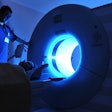The 1,017-bed facility measures uptime quarterly rather than annually, based on 24-hour, seven-day-a-week performance. Michael Harris, head of radiology, physics, and engineering in the radiology department, felt that the annual numbers were "not very practical, because the latency between the time of the event and the remedy."
"People forget the occurrence within a couple of months. After one year, people hardly remember the original occurrence," he said.
Based on its quarterly reports, more than 90% of Johns Hopkins' devices perform above the 98% point for uptime.
Because it has onsite engineering and service staff, an equipment issue at Loyola University Medical Center in Maywood, IL, can be addressed in approximately 15 minutes. "In that scenario, most problems can be fixed within the first hour," said Al Moretti, director of clinical engineering. "That means the equipment gets back up faster, there is no patient interruption, and there is no revenue loss. Those are the measuring points we work with."
Loyola also views downtime in the emergency room differently than downtime in one of its primary care clinics. The emergency room is running 24/7, 365 days a year; the primary care center is running Monday through Friday for nine hours each day.
With greater uptime, there is no interruption in patient flow and patient care. Another important factor is that the hospital avoids a negative reputation when it cannot fulfill its obligation to patients.
"Obviously, people who leave here are not happy customers," Moretti said. "We might not see them back here, or their 10 friends that they tell about their experience."
-- Wayne Forrest



















